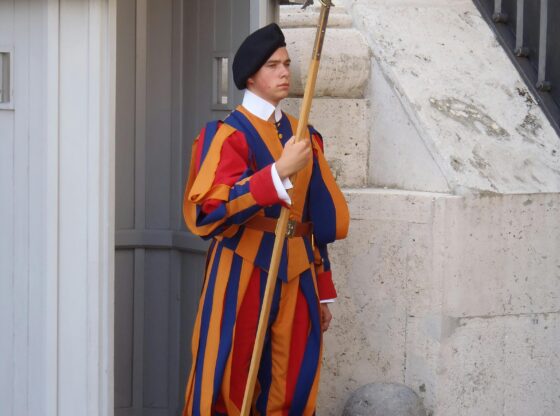The Vatican Swiss Guard history is a tapestry of loyalty, tradition, and martial excellence. For over five centuries, these elite soldiers have stood as the protectors of the Pope and the Vatican, their distinctive uniforms and unwavering discipline capturing global fascination. But who exactly can join their ranks? Are the doors open only to Swiss nationals, or can foreigners enlist? The Swiss Guard recruitment requirements are stringent, steeped in tradition, and leave little room for ambiguity. Beyond the striking Swiss Guard uniform symbolism, the role of the Swiss Guard at the Vatican demands unwavering commitment. Understanding the Swiss Guard training and duties reveals why this small force remains one of the most exclusive military units in the world.
The Swiss Guard’s Unbreakable Link to Switzerland
The Pontifical Swiss Guard is not just a ceremonial force—it is a living relic of Renaissance-era pacts and unyielding Swiss loyalty. Founded in 1506 by Pope Julius II, the Guard has maintained an unbroken presence, surviving sacks, wars, and political upheavals. Its very existence hinges on a sacred covenant: only Swiss men need apply. This is not mere preference but a non-negotiable condition, rooted in historical treaties and the Vatican’s trust in Swiss soldiers’ famed reliability.
The requirement is absolute. A would-be guardsman must hold Swiss citizenship, be a practicing Catholic, and possess unblemished moral character. The Guard’s exclusivity is not about elitism but continuity—a way to preserve the sacred bond between Switzerland and the Holy See. Foreigners, regardless of faith or military prowess, need not apply.
The Rigorous Path to the Halberd
The recruitment process is a gauntlet of physical, spiritual, and psychological trials. Candidates must be between 19 and 30 years old, stand at least 174 cm tall, and have completed Swiss military service with exemplary conduct. But military prowess alone is insufficient. A deep-rooted Catholic faith is mandatory, verified through parish references and personal interviews.
Training is grueling. Recruits endure months of drills in combat, protocol, and Italian language proficiency. The Swiss Guard training and duties extend beyond standing sentinel in their iconic striped uniforms. They are trained in modern security tactics, emergency response, and even unarmed combat. Every guardsman must be ready to lay down his life—a vow taken seriously since the 1527 Sack of Rome, where 147 Guards died defending Pope Clement VII.
The Uniform: More Than Stripes and Plumes
The Swiss Guard uniform symbolism is a masterclass in heritage. The vibrant blue, red, and yellow stripes are said to be inspired by Renaissance art, though myths attribute the design to Michelangelo himself. Each element carries meaning: the morion helmet echoes ancient warriors, the white collar signifies purity, and the black beret marks non-commissioned ranks.
Yet, the uniform is not static. The modern Guard also dons a more practical navy-blue version for daily duties, blending tradition with necessity. The ceremonial garb, reserved for special occasions, serves as a visual oath—a declaration that these men are the last line of defense for the world’s smallest sovereign state.
A Life of Discipline and Devotion
The role of the Swiss Guard at the Vatican is multifaceted. They are sentinels, bodyguards, and diplomats. A typical day might involve directing pilgrims at St. Peter’s Basilica, securing Vatican City’s entrances, or standing vigil during papal ceremonies. Their presence is both a deterrent and a reassurance—a reminder that the Pope’s safety rests in the hands of men who take their vows as seriously as knights of old.
But life in the Guard is not all solemnity. Guardsmen live in communal barracks, forging bonds that last lifetimes. Many leave with a profound sense of purpose, having served at the crossroads of faith and history.
The question remains: will the Guard ever open its ranks to foreigners? Given its unbroken traditions, the answer is almost certainly no. The Swiss Guard is not just a security detail—it is a centuries-old brotherhood, a living monument to a singular alliance between a nation and the Church. To alter its foundations would be to sever the very threads that have held it together for 500 years.


